Debating the opportunity costs of earning on your Bitcoin.
Crypto Twitter, like many Twitter-spheres, is as full of self-affirmation and choir preaching as it is of internal holy-wars (not too unlike those described on this post). We can characterize two camps within the crypto/digital asset space. This is a gross oversimplification to be sure, but paints a picture of the space where there are a spectrum of competing ideas.
One group is financial and technically more conservative; this group wants the hardest monetary policy, extremely high levels of computational security, and the ability to self-verify everything. They might see the benefit of more complex functionality, but think this functionality must be built on top of a highly reliable and trustworthy base layer. These folks value minimizing attack vectors, self-auditing, backwards compatibility, and privacy. The Bitcoin Maximalists fit into this group.
The second group is more liberal; they are interested in rapid innovation, maximal flexibility and functionality, and often have higher risk tolerances. While they still value security and decentralization, they are comfortable with a larger set of concepts and designs. There is substantial internal diversity among the members of this group, but many of them envision a future with many successful interconnected projects (rather than a single base layer).
As an example, we recently watched the Bitcoin Maximalists spar with the Ethereum community over issues such as cost to run a full node and auditing a network’s total supply in a debate dubbed “#supplygate” (1, 2).
What if you could benefit from additional functionality without compromising on security?
Putting Your Crypto to Work
DeFi, or Decentralized Finance, is arguably the hottest subject of 2020 within the crypto space. This new buzz word describes the broad set of protocols which enable decentralized financial product/service applications (acknowledging that there isn’t complete consensus on what fits into this category). I aggregated and parsed unique documents mentioning the keyword “DeFi” using Inca’s data in Splunk. We can see an increase in buzz over the course of 2020:

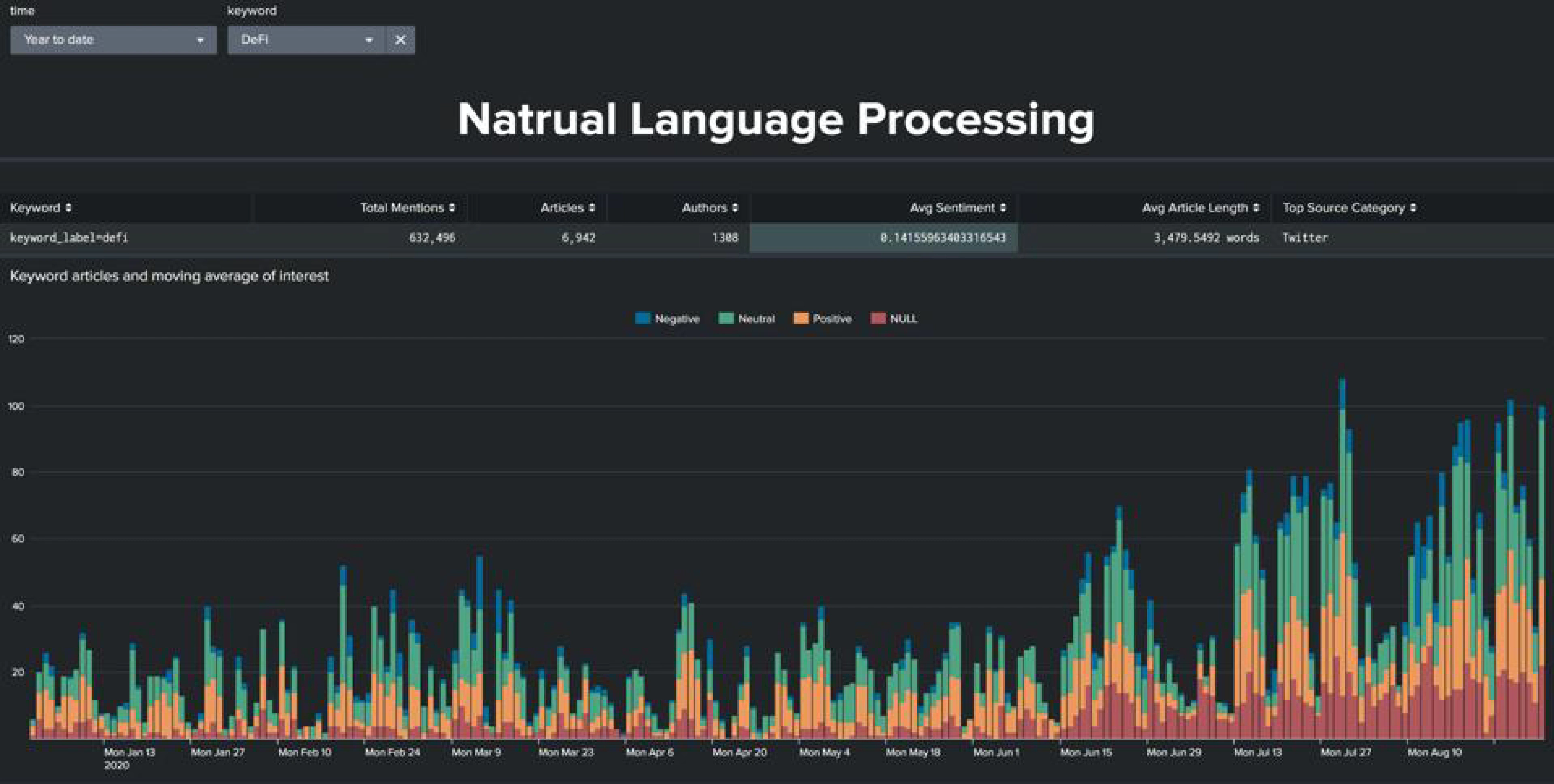
People are interested in DeFi both for its potential in Reinventing Global Finance, and as a way to make massive investment returns. DeFi applications include systems such as automated market making, derivatives, and lending. “Yield Farming” is the process of utilizing DeFi protocols to generate yield on one’s digital assets.
YFI (the token for Yearn Finance), for example went from trading around $4,000 at the start of the month to a price of over $36,000, surpassing $1 billion in marketcap:
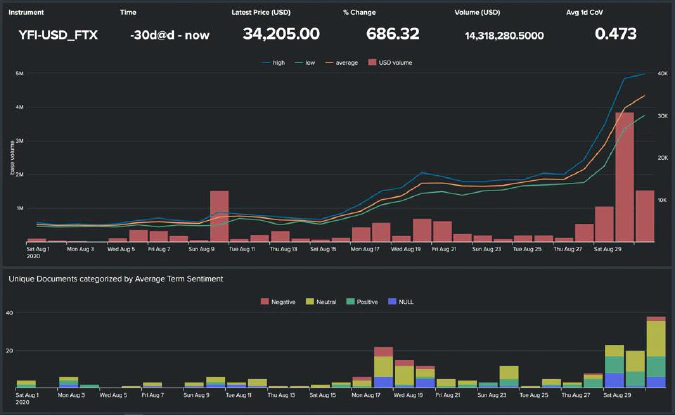
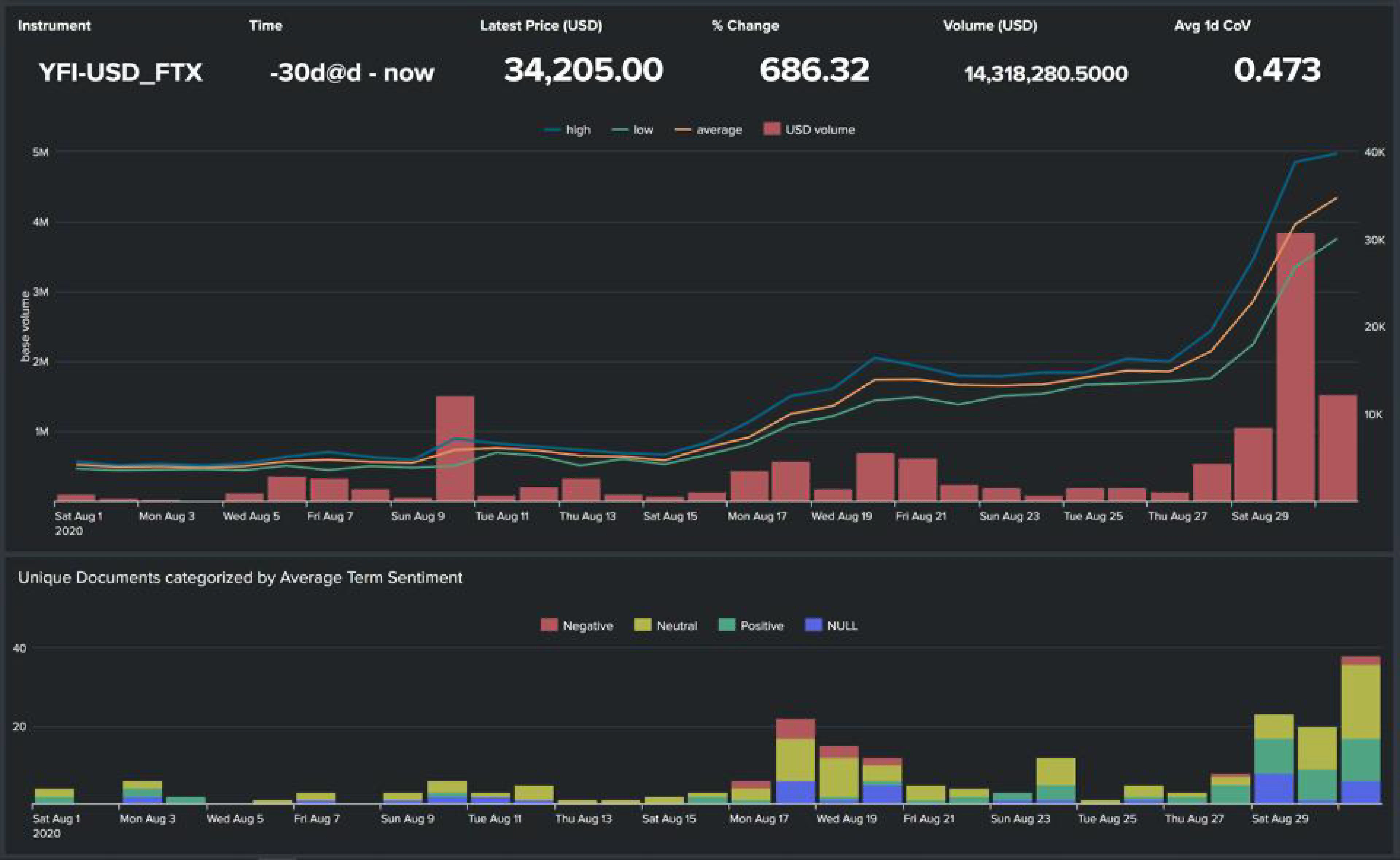
These protocols, of course, are far from being risk-free, and this market activity does not appear to be sustainable. In some ways the DeFi craze mirrors what we saw in 2017 with the ICO boom, when projects were pulling millions of dollars before anyone had time to find the associated white paper.
Yam Finance (with the symbol YAM) was an unaudited project started in just 10 days (start to finish according to them) which was launched on Aug 11th. According to Coingecko, it hit a market cap of almost $60 million on Aug 13th. Then, a bug was discovered which locked up ~ $750,000 in Curve y tokens and the price immediately plummeted.
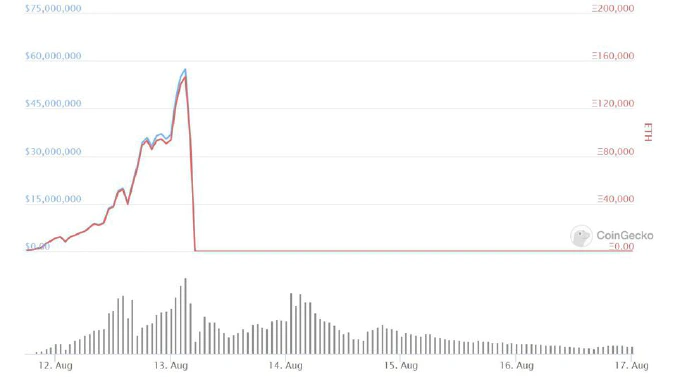
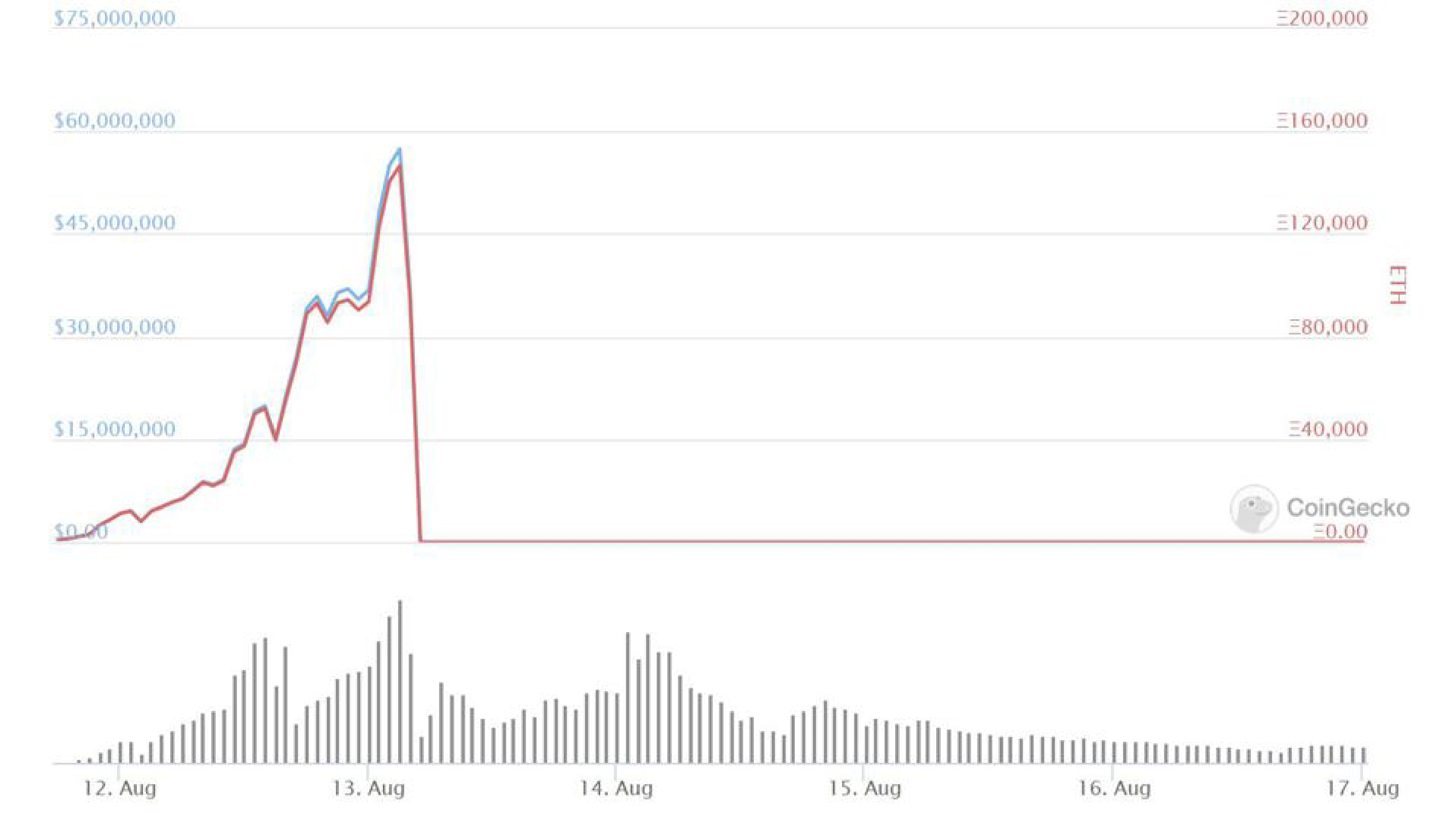
But what about tokenized Bitcoin?
The amount of Bitcoin locked on Ethereum has exploded over the last month. The USD value locked in WBTC and RenBTC, the two leading methods of locking your BTC into Ethereum transactions have outpaced the production of Bitcoins earned by miners:
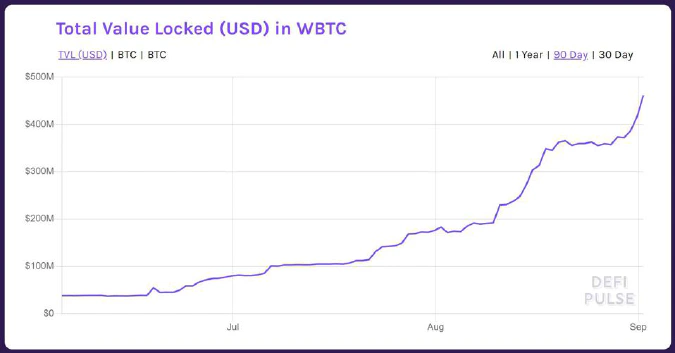
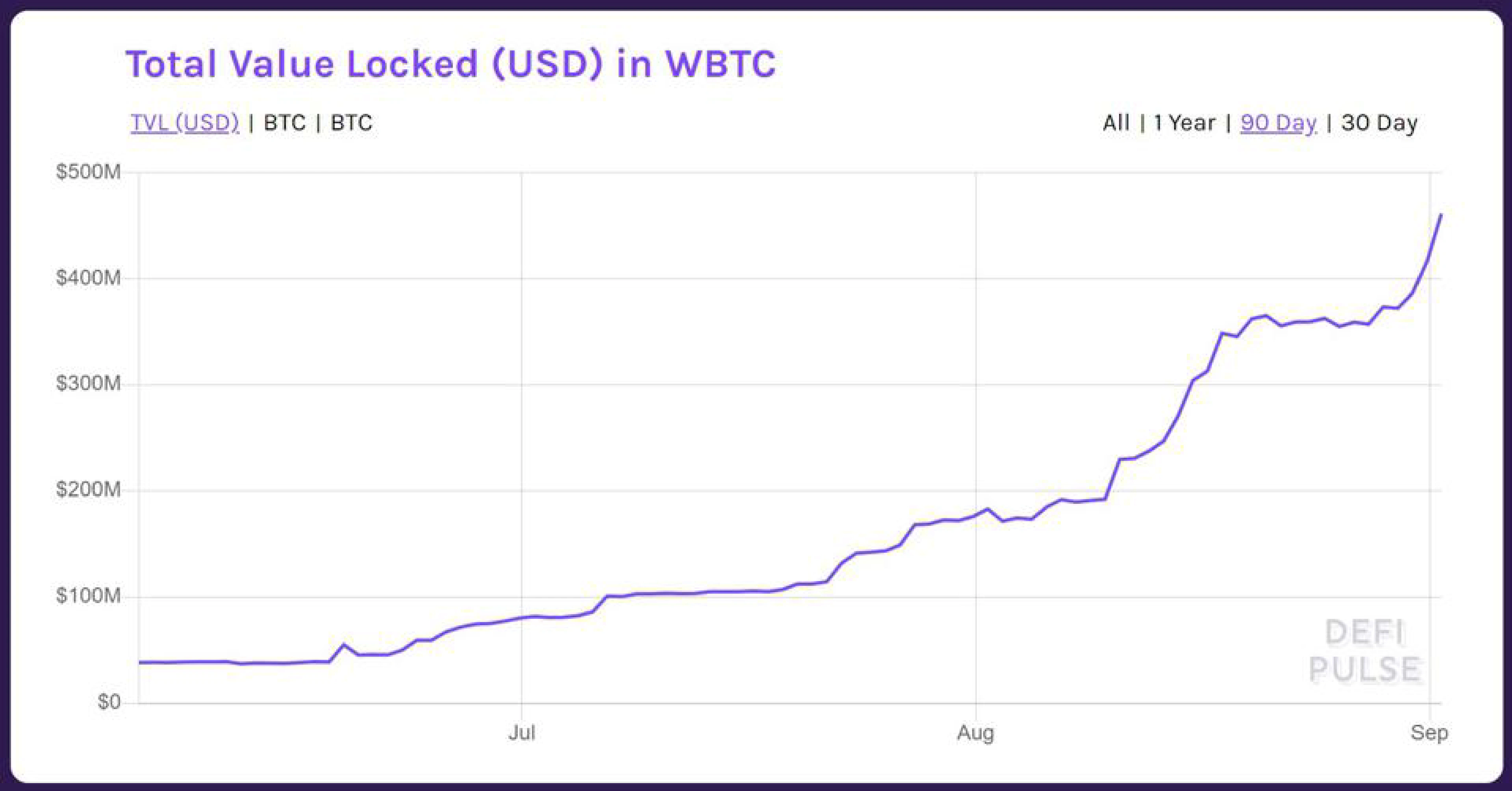
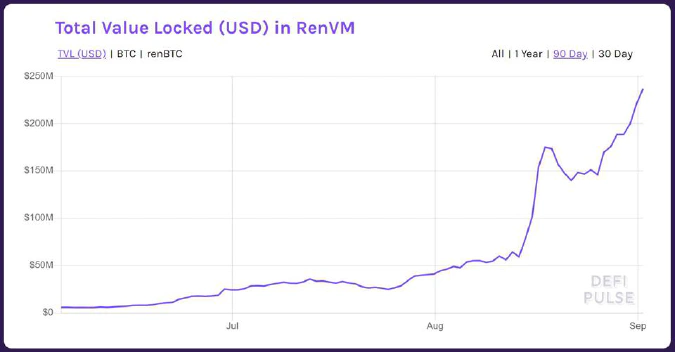
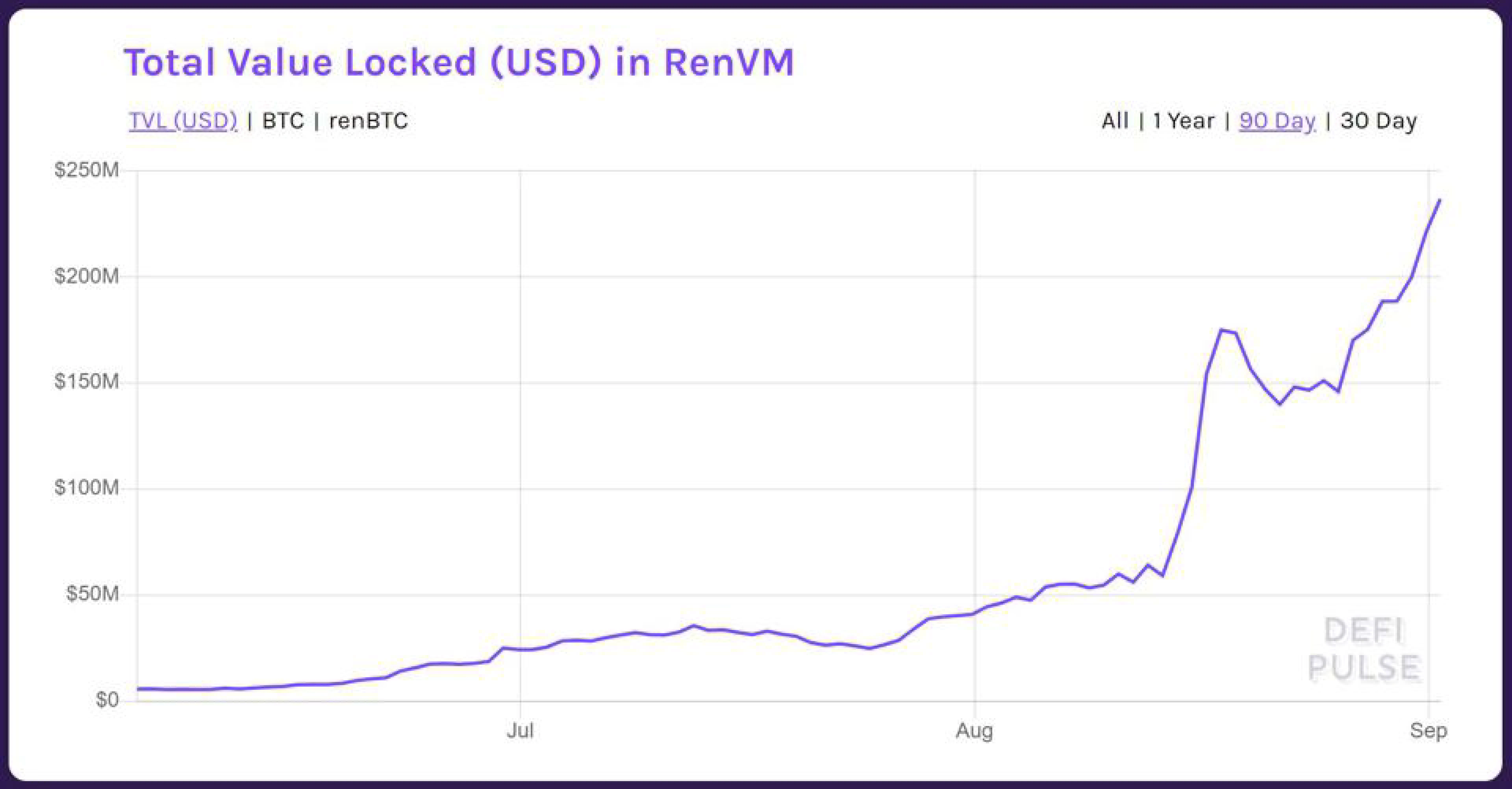
Each of these methods carry a unique set of risks. WBTC is an ERC20 token backed 1:1 with BTC which involves a custodian, and the KYC that comes with it.
The renBTC token uses the Ren Virtual Machine to mint BTC to an Ethereum smart contract. This method avoids the counterparty risk, but could be void of any way of retrieving trapped funds.
In addition to counter party and/or smart contract risks, users must pay outrageously high gas prices on their transactions (which could fail), navigate the various platforms which enable the minting of these tokens, and make sure they avoid scams and user errors along the way.
Conceptually, locking your assets into smart contracts which allow you to put your money to work is great. If it is possible to generate income without compromising the financial sovereignty offered by permission-less and censorship-resistant money like Bitcoin, it would benefit both the Maximalists and Yield Farmers alike.
Today, however, Bitcoin (as well as Yams and Sushi) still abides by the same rules as cake. While there are now various ways of putting your digital money to work, there are important risks and trade offs associated with them. I expect the “Bitcoin Centrist” camp to grow as these trade offs are reconciled by developers and users.